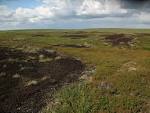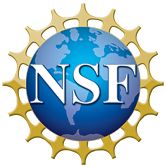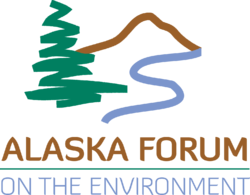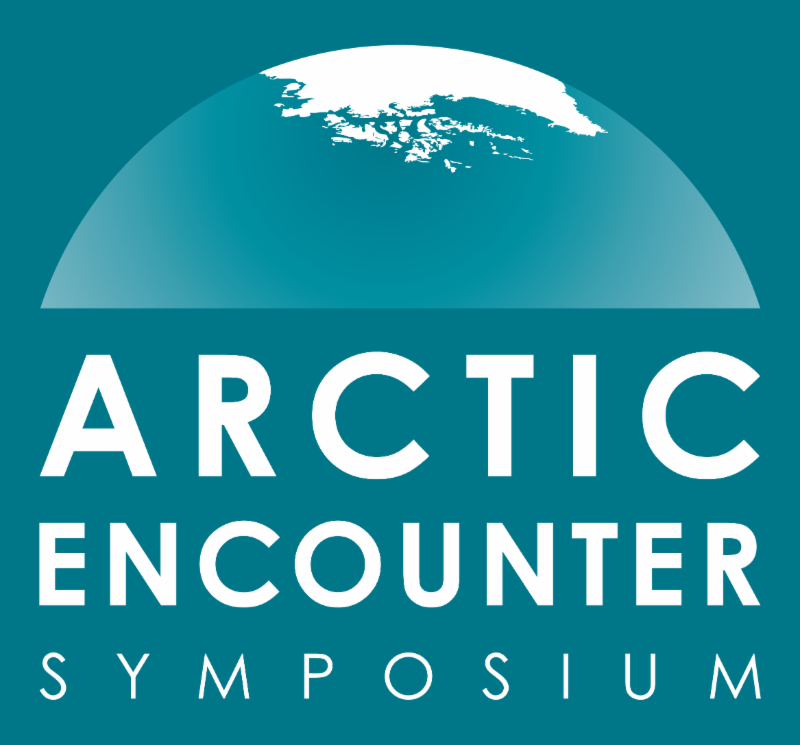|
|
|
|
|
|
|
|
|
No Arctic-science events are announced today.
|
Media
Erosion May Transform the Arctic Food Chain. As climate change continues to grip the Arctic-causing the oceans to rise, permafrost to thaw and sea ice to melt-scientists believe they've discovered an unexpected consequence of the shifting landscape. Changes along the coastline are altering the composition of the Arctic Ocean, in ways that could fundamentally transform the local food chain. A new study published yesterday in the journal Science Advances suggests that there's been an increase in the amount of soils or sediments flowing from the Arctic shore into the ocean over the last decade. And the researchers say climate change is likely to blame. As Arctic sea ice continues to melt, it's exposing the shallow regions around the coast to more wind and wave action, causing the waters to churn and draw sediments up from the continental shelf into the water column. Scientific American
 Report Released. Report Released. USARC Advisor, Zachary Hamilla, released a report, "The Arctic in U.S. Identity," along with Google Consumer Survey data used to support his observations. See the responses to these 7 questions
1. How important is the Arctic to your identity as an American?
2. How much do you agree or disagree with the following statement? 'The United States is an Arctic Nation with broad and fundamental interests in the Arctic Region.'
3. How important is the Arctic to the U.S. economy?
4. How important is the Arctic to U.S. national security?
5. Have you ever been to Alaska?
6. What is the first thing that comes to mind when you think of the Arctic?
7. What is the first thing that comes to mind when you think of Alaska?
Why So Cold? Climate Change May be Part of the Answer. As bitter cold continues to grip much of North America and helps spawn the fierce storm along the East Coast, the question arises: What's the influence of climate change? Some scientists studying the connection between climate change and cold spells, which occur when cold Arctic air dips south, say that they may be related. But the importance of the relationship is not fully clear yet. New York Times
In the Bones of a Buried Child, Signs of a Massive Human Migration to the Americas. UAF research... The girl was just six weeks old when she died. Her body was buried on a bed of antler points and red ocher, and she lay undisturbed for 11,500 years. Archaeologists discovered her in an ancient burial pit in Alaska in 2010, and on Wednesday an international team of scientists reported they had retrieved the child's genome from her remains. The second-oldest human genome ever found in North America, it sheds new light on how people - among them the ancestors of living Native Americans - first arrived in the Western Hemisphere. New York Times
Ancient Americans Arrived in a Single Wave, Alaskan Infant's Genome Suggests. A rare smidgen of ancient DNA has sharpened the picture of one of humanity's greatest migrations. Some 15,000 to 25,000 years ago, people wandered from Asia to North America across a now-submerged land called Beringia, which once connected Siberia and Alaska. But exactly when these ancient settlers crossed and how many migrations occurred are hotly debated. Now, the oldest full genome to be sequenced from the Americas suggests that some settlers stayed in Beringia while another group headed south and formed the population from which all living Native Americans descend. "This is an important study that significantly narrows the subset of possibilities [for how the Americas were peopled]," says David Reich, a geneticist at Harvard Medical School in Boston. "It's very exciting." ScienceMag
 Arctic Clouds Highly Sensitive to Air Pollution. Arctic Clouds Highly Sensitive to Air Pollution. In 1870, explorer Adolf Erik Nordenskiöld, trekking across the barren and remote ice cap of Greenland, saw something most people wouldn't expect in such an empty, inhospitable landscape: haze. Nordenskiöld's record of the haze was among the first evidence that air pollution around the northern hemisphere can travel toward the pole and degrade air quality in the Arctic. Now, a study from University of Utah atmospheric scientist Tim Garrett and colleagues finds that the air in the Arctic is extraordinarily sensitive to air pollution, and that particulate matter may spur Arctic cloud formation. These clouds, Garrett writes, can act as a blanket, further warming an already-changing Arctic. Phys.org
Opinion: New Research on Ocean Acidity Raises Red Flags for Alaskans. Fishing families and businesses across Alaska are veterans at keeping an eye out for change - day-to-day and season-to-season. The largest single employer in the state of Alaska, and a food source for millions, the successes of Alaskan seafood harvests rise and fall with a dynamic marine food web. New research is shedding light on a big change within that system - ocean acidification - and Alaska's salmon fishermen are watching closely. Researchers from NOAA and the University of Washington have found that wild salmon runs may be affected by rising ocean acidity - a well documented global trend that is particularly pronounced in the cold-water, carbon-rich waters off Alaska's vast coastline. Anchorage Daily News
Trump Administration to expand drilling off U.S. Continental Waters. The Trump administration unveiled a controversial plan Thursday to permit drilling in most U.S. continental shelf waters, including protected areas of the Arctic and the Atlantic, where oil and gas exploration is opposed by governors from New Jersey to Florida, nearly a dozen attorneys general, more than 100 U.S. lawmakers and the Defense Department. Washington Post.
 Arctic research job opportunities at NSF. Get 'em while they're hot...two program director jobs openings, at the National Science Foundation, for the Arctic Observing Network (AON) program, and for the Arctic System Science program have been posted on USAJOBS.gov. The announcements can be found here (for AON), and here (for ASS).
|
|
Future Events
ISAR-5 Fifth International Symposium on Arctic Research, January 15-18, 2018 (Tokyo, Japan). The fifth ISAR has been planned at the recommendation of the science steering committee of ISAR-4, which was held in Toyama, Japan in April 2015. The fifth ISAR will be devoted to discussions on environmental changes in the Arctic and their regional and global implications, to seek additional international scientific collaboration in this area by gathering, synthesizing and sharing information related to these changes occurring in the Arctic. Special emphasis will be placed on the fields of the social sciences and humanities, which were not included in the previous ISARs. ISAR-5 will consist of general sessions and special sessions. The general sessions will address the following topics: atmosphere; ocean and sea ice; rivers, lakes, permafrost, and snow cover; ice sheets, glaciers, and ice cores; terrestrial ecosystems; marine ecosystems; geospace; policies and economy; and social and cultural dimensions. Special sessions will be solicited on cross-cutting themes.
NSF Principles for the Conduct of Research in the Arctic, Comments due January 16, 2018. The Interagency Arctic Research Policy Committee (IARPC), is seeking comments on how best to revise and strengthen the Principles for the Conduct of Research in the Arctic. A Federal Register Notice has been published to solicit community input. Since 1990, community engagement and Arctic research have advanced both in theory and in practice, necessitating a review and update of the current Principles. The Principles Revision Working Group of IARPC is seeking input from all stakeholders to revise and update the Principles. The update will focus on communicating clearly the Principles for community engagement by Arctic researchers and including language that describes partnerships and collaborations with Indigenous scholars, enhanced community-based observations, fostering community-based participatory research, and the integral contributions of Indigenous knowledge in the co-production and dissemination of knowledge. Input is also sought on enhancing the dissemination and implementation of the Principles. Comments can be emailed to iarpcprinciples@nsf.gov.
Alaska Region Climate Outlook Briefing, January 19, 2018 (Fairbanks, Alaska USA/ webinar). This event is sponsored by the Alaska Center for Climate Assessment and Policy. This webinar will review recent conditions and current state of the climate system in and near Alaska and the status of important global climate drivers, review guidance available for the monthly and seasonal scale outlooks and finish up the official outlooks by NOAA's Climate Prediction Center.
2018 Arctic Frontiers: Connecting the Arctic, January 21-26, 2018 (Tromso, Norway). Arctic Frontiers is an international arena on sustainable development in the Arctic. The conference addresses the management of opportunities and challenges to achieve viable economic growth with societal and environmental sustainability. Arctic Frontiers brings academia, government and business together to create a firmer foundation for decision-making and sustainable economic development in the Arctic. Join the Arctic Frontiers conference preparing the new Arctic future. The conference takes place the fourth week of January in the Norwegian city of Tromsø, known as the Gateway to the Arctic.
Alaska Marine Science Symposium, January 22-26, 2018 (Anchorage, Alaska.) The Alaska Marine Science Symposium (AMSS) is Alaska's premier marine research conference. For over 20 years, it has brought together scientists, educators, resource managers, students, and the public to discuss marine research conducted in Alaskan waters. Over 700 people attend this 4-day long conference held annually in January. Each day of the conference highlights Alaskan marine ecosystems: Bering Sea & Aleutian Islands (Wednesday), and the Gulf of Alaska (Tuesday), and Arctic (Thursday). Research topics discussed range from ocean physics, fishes and invertebrates, seabirds, marine mammals, to local traditional knowledge. Website for 2018 meeting is here.
Alaska Forum on the Environment, February 12-16, 2018 (Anchorage, Alaska) . AFE is a statewide gathering of environmental professionals from government agencies, non-profit and for-profit businesses, community leaders, Alaskan youth, conservationists, biologists and community elders. The diversity of attendees sets this conference apart from any other. The 2018 event will be our 20th year providing a strong educational foundation for all Alaskans and a unique opportunity to interact with others on environmental issues and challenges. . AFE is a statewide gathering of environmental professionals from government agencies, non-profit and for-profit businesses, community leaders, Alaskan youth, conservationists, biologists and community elders. The diversity of attendees sets this conference apart from any other. The 2018 event will be our 20th year providing a strong educational foundation for all Alaskans and a unique opportunity to interact with others on environmental issues and challenges.
Methane Variation Over Terrestrial and Marine Arctic Areas (2010-2016): IASI Satellite Data, March 13, 2018 (Silver Spring, Maryland USA). There is evidence that methane is being released into the atmosphere at high northern latitudes as the Arctic warms up. Methane concentration in the Arctic lower troposphere was estimated between 2010 and 2016 with the Infrared Atmospheric Sounding Interferometer (IASI), a thermal IR spectrometer orbiting the Earth on a satellite MetOp-A. The area studied encompasses the Barents/ Kara seas and the Wester Siberian Lowland (WSL), one of the most important methane sources in high northern latitudes. This event is a NOAA's National Ocean Service Science Seminar.
 5th Annual Arctic Encounter Symposium (AES), April 19-20, 2018 (Seattle, WA, USA) 5th Annual Arctic Encounter Symposium (AES), April 19-20, 2018 (Seattle, WA, USA) - The Arctic Encounter, the largest annual Arctic policy conference in the U.S., will convene policymakers, industry leaders, scientists, Arctic artists and musical performers, and other stakeholders to debate and discuss emerging Arctic challenges and opportunities including policy, innovation, security, and development. The mission of AES is to raise awareness, engage challenges, and develop solutions for the future of the Arctic region and the people who live there. The 5th annual AES will take place in downtown Seattle at the Bell Harbor International Conference Center on Pier 66.
2018 North by North Festival, April 23-29, 2018 (Anchorage, Alaska USA). The North by North Festival captures the spirit of Alaska and the Arctic - to address our challenges and opportunities with Northern innovation and resilience, to build on a rich history and to ensure a future full of promise. The Festival is for the North, and organized by Northerners, with goals of sustainability, livability and growth. The Festival brings innovators from across Alaska, the nation and other Arctic regions to collaborate and address local and circumpolar challenges. Through knowledge, governance, business, design, film, music, food, literature and art, we celebrate the North.
The Effects of Climate Change on the World's Oceans, June 4-8, 2018 (Washington, DC USA). The 4th International Symposium will bring together experts from around the world to better understand climate impacts on ocean ecosystems - and how to respond. The event is hosted by a variety of groups including International Council for the Exploration of the Sea (ICES), N. Pacific Marine Science Organization (PICES), Intergovernmental Oceanographic Commission of UNESCO (IOC), and Food and Agriculture Organization of the United Nations (FAO).

International Conference on Arctic Margins (ICAM) VIII, June 11-14, 2
The international Conference on Arctic Margins (ICAM) is a forum for earth scientists who study the Arctic. It was founded to help understand the little known Arctic geology and to foster cooperation and collaboration among Arctic researchers. There have been 7 meetings since its inception in 1991. See here for more information.
 POLAR 2018, June 15-27, 2018 (Davos, Switzerland). POLAR2018 is a joint event from the Scientific Committee on Antarctic Research (SCAR) and the International Arctic Science Committee (IASC). The SCAR meetings, the ASSW and the Open Science Conference will be hosted by the Swiss Federal Institute for Forest, Snow and Landscape Research WSL under the patronage of the Swiss Committee on Polar and High Altitude Research. The WSL Institute for Snow and Avalanche Research SLF is organizing POLAR2018. POLAR 2018, June 15-27, 2018 (Davos, Switzerland). POLAR2018 is a joint event from the Scientific Committee on Antarctic Research (SCAR) and the International Arctic Science Committee (IASC). The SCAR meetings, the ASSW and the Open Science Conference will be hosted by the Swiss Federal Institute for Forest, Snow and Landscape Research WSL under the patronage of the Swiss Committee on Polar and High Altitude Research. The WSL Institute for Snow and Avalanche Research SLF is organizing POLAR2018.
Arctic Observing Summit 2018, June 24-26, 2018 (Davos, Switzerland). The Arctic Observing Summit (AOS) is a high-level biennial summit that provides a platform to address urgent and broadly recognized needs of Arctic observing across all components of the Arctic system. AOS 2018 will be held in Davos, Switzerland ( June 24-26) and will focus on pressing issues in the implementation and support of sustained observations that can be addressed through a business-case lens. To that end, short submissions are requested that address any and all aspects of the overarching theme and sub-themes. Additional information can be found here.
17th International Congress of Circumpolar Health (ICCH17), August 12-15, 2018 (Copenhagen, Denmark). The ICCH congresses are held every third year in different locations in the circumpolar area and represent the largest scientific meetings worldwide on circumpolar health. The ICCH congresses serve as the primary source of information exchange and scholarly communication in issues relating to circumpolar health. More than 750 participants generally register and participate in each Congress, and more than 400 scientific papers or posters are usually presented.
The second Arctic Biodiversity Congress is hosted by the Conservation of Arctic Flora and Fauna (CAFF), the biodiversity working group of the Arctic Council, and the Ministry of the Environment, Finland. The second Arctic Biodiversity Congress will build on the success of the first Congress, held in 2014 in Trondheim, Norway, and will bring together scientists, policymakers government officials, Indigenous representatives, Traditional Knowledge holders, industry, non-governmental organizations, and others to promote the conservation and sustainable use of Arctic biodiversity.
|
|

  
4350 N. Fairfax Drive, Suite 510
Arlington, VA 22203, USA
External links in this publication, and on the USARC's World Wide Web site ( www.arctic.gov) do not constitute endorsement by the US Arctic Research Commission of external Web sites or the information, products or services contained therein. For other than authorized activities, the USARC does not exercise any editorial control over the information you may find at these locations. These links are provided consistent with the stated purpose of this newsletter and the USARC Web site.
|
|
|
|
|
|
|
|
|
 Report Released. USARC Advisor, Zachary Hamilla, released a report, "The Arctic in U.S. Identity," along with Google Consumer Survey data used to support his observations. See the responses to these 7 questions
Report Released. USARC Advisor, Zachary Hamilla, released a report, "The Arctic in U.S. Identity," along with Google Consumer Survey data used to support his observations. See the responses to these 7 questions Arctic Clouds Highly Sensitive to Air Pollution. In 1870, explorer Adolf Erik Nordenskiöld, trekking across the barren and remote ice cap of Greenland, saw something most people wouldn't expect in such an empty, inhospitable landscape: haze. Nordenskiöld's record of the haze was among the first evidence that air pollution around the northern hemisphere can travel toward the pole and degrade air quality in the Arctic. Now, a study from University of Utah atmospheric scientist Tim Garrett and colleagues finds that the air in the Arctic is extraordinarily sensitive to air pollution, and that particulate matter may spur Arctic cloud formation. These clouds, Garrett writes, can act as a blanket, further warming an already-changing Arctic. Phys.org
Arctic Clouds Highly Sensitive to Air Pollution. In 1870, explorer Adolf Erik Nordenskiöld, trekking across the barren and remote ice cap of Greenland, saw something most people wouldn't expect in such an empty, inhospitable landscape: haze. Nordenskiöld's record of the haze was among the first evidence that air pollution around the northern hemisphere can travel toward the pole and degrade air quality in the Arctic. Now, a study from University of Utah atmospheric scientist Tim Garrett and colleagues finds that the air in the Arctic is extraordinarily sensitive to air pollution, and that particulate matter may spur Arctic cloud formation. These clouds, Garrett writes, can act as a blanket, further warming an already-changing Arctic. Phys.org







